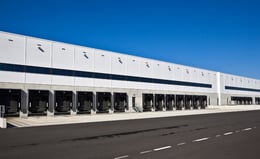5 Important Supply Chain Advancements in the Last Decade
Nick Ostdick - May 09, 2017

Blink and you might miss it. That’s the sentiment about the evolution of today’s global manufacturing supply chain during the last decade. With a seemingly constant introduction of new technological platforms, supply chain management strategies, and major players in the supply stream, some could argue the supply chain landscape barely resembles that of the field of play a mere ten years ago. Perhaps this is one of the core drivers for why speed and agility are two of the most prized abilities for manufacturing companies in today’s supply pipeline.
But with so much progress so quickly, it can be easy to lose sight of the major advancements in supply chain management during the last ten years that have led us to where we are today. Industry analysts and experts advise the supply chain of the very near future might resemble very little the supply stream of today, and in order to successfully get where you’re going, you have to have a comprehensive knowledge of where you’ve been.
Whether it’s technological evolutions like The Internet of Things or fundamental shifts in supply chain theory like recent introduction and proliferation of S&OE (sales and operations execution), let’s take a brief look at 5 important supply chain advancements during the last 10 years and their impact on how today’s supply stream operates.
Widespread use of ERP systems
Motivated in part by earlier systems such as Material Requirements Planning systems first introduced in the late 1980’s, the widespread adoption of Enterprise Resource Solutions (ERP) stemmed from the desire to integrate multiple systems that previously were not in communication with each other. This not only improved the accuracy and availability of data and information critical to effective planning and production programs, but it was also the first movement toward a more holistic integration of once disparate systems to break down cross-organizational communication and planning silos. Adoption of ERP on such a broad scale also highlighted the need for more accurate planning strategies and more efficient production sequences especially in the more variant-rich industries.
Growth and interest in emerging markets
With the slowing of many worldwide economies beginning in 2005 and 2006, the manufacturing supply chain looked outside the traditional borders of Europe and the United States to a number of emerging manufacturing and supply markets like China, South America, and several others. This shift forced manufacturing companies to not only rethink how to successfully introduce products into these new markets, but also how to leverage means of production within these new markets to reduce the procurement and production costs associated with transporting raw materials to new production hubs. This interest and growth in new markets also prompted manufacturing companies to reevaluate how they manage complex partner networks and allocate resources and job scheduling on a worldwide scale.
Integration of technologies
As we mentioned with ERP systems, a move toward more integrated planning and production technology platforms has resulted in a fundamental shift in how planners and managers approach supply chain management on an end-to-end basis. No longer is sales, procurement, production, and transportation viewed as separate pieces of supply chain logistics. Because planning, manufacturing, data analysis, and reporting functions are essentially viewed as part and parcel of global supply chain logistics, more departments on a cross-organizational basis are able to access data and reporting to leverage this information for greater productivity and efficiency. Essentially, the integration of technology has resulted in the integration of various supply chain duties, tasks, and roles for enhanced end-to-end (E2E) visibility and agility across the entire value chain.
Risk management becomes an important priority
In large part due to the expansion of a more traditional supply stream to a more complex, global level, the ability to management mitigate risk has emerged as a top priority for planners and managers. Because so much of manufacturing and supply chain logistics operate in a volatile landscape in terms of availability of raw materials, resources, and other elements critical to smooth production processes, manufacturing companies have thus deployed advanced planning strategies for the short, mid, and long-term to reduce the risk of breakdowns and bottlenecks and increase customer satisfaction in an increasingly competitive marketplace. Whether it’s through the micro-lens of an S&OE strategy or a more detailed, hyper-focussed view via advanced analytics, planners and managers have realized risk management is a necessity in a worldwide partner network.
Supply chain management arrives in the C-suite
We just briefly mentioned how technology integration helped integrate various duties and roles within the manufacturing and supply stream. In the spirit of this integration, one of the more interested developments during the last ten years in the arrival of supply chain logistics and management in the C-suite — for example, just look at the emergence of the title Chief Supply Chain Officer during the last few years, a role which more and more manufacturing companies are implementing. Supply chain logistics are no relegated to the production room floor. Rather, the most successful manufacturing companies have realized an effective manufacturing and supply strategy means involving the C-suite to help align priorities from the boardroom to the production room.
If you want to learn more, download your guide to Transformation of Manufacturing Processes.
In this Guide you will learn:
-
Emerging Challenges in the Modern Truck/Automotive Industry
-
How Can Global Companies Adapt to These New Realities
-
How Decentralized Digital Systems Power Smarter Planning Processes
-
How flexis Can Support Flexible Supply Chain Transformation
LATEST POSTS
- Understand Circular Economy in The Manufacturing Industry
- How Can Industry 4.0 IT Integration Be Achieved Smoothly?
- The Significance of Order Sequencing in Discrete Manufacturing
- How to improve your Supply Chain Management: The Power of Control Towers
- Optimizing Human Resource Scheduling in Manufacturing: A Technological Approach



